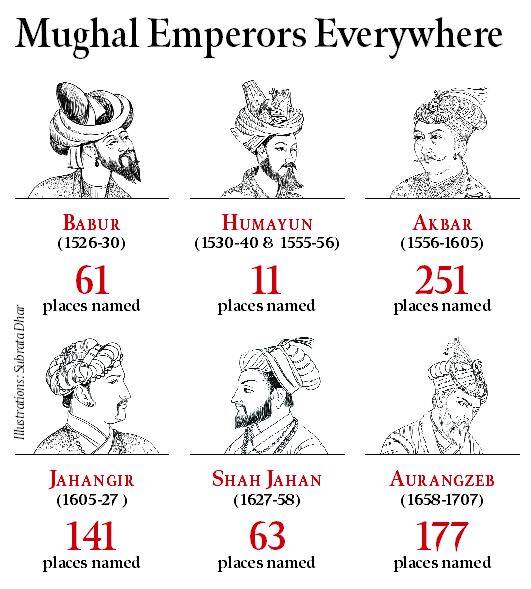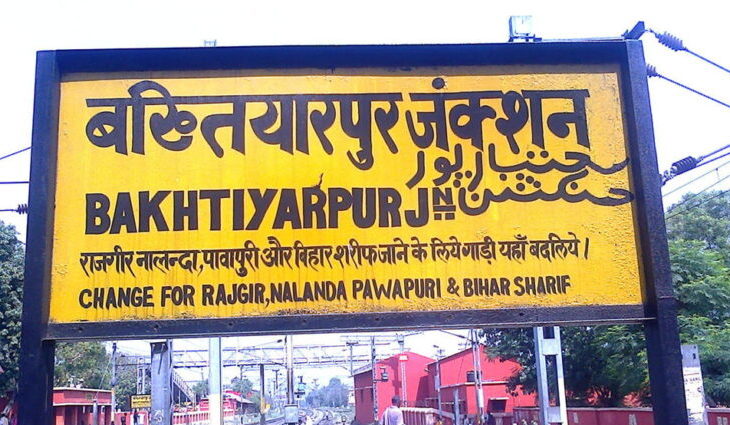Once, Shakespeare wondered loudly: What’s in the name? That which we call a rose / By any other name would smell as sweet. However, he couldn’t have been more wrong, at least in this part of the world, where a certain name in a certain situation can be a matter of life and death.
Yesterday, Aurangabad and Osmanabad were renamed after much dithering. It was the last move by the Uddhav Thackrey government before their government was sent home in the hope that it would eventually be turned down, keeping both communities happy. However, they now had to put on a brave face after they were renamed.
As usual, secularists, more than Muslims, are making a hue and cry over the course correction of history. Their main grouse is that the Mughals were the best thing to happen to India, which had been living a dark and depraved life till then.
The renaming of two cities is just a drop in the mighty Ganges as at least 704 towns and villages are still named after the Mughals all over India, with Akbar cornering the largest share with 205 names. The count can stretch up to thousands easily if one starts counting the localities in the cities. Till a decade back, every mohalla in Lucknow was deliberately named after some obscure local Muslim. No wonder Uttar Pradesh, the Empire’s heartland, bears the most terrible imprint of the legacy, with 396 villages and towns with populations of one lakh or more named after the Mughals.

The most dreaded Mughal, Aurangzeb, though quite a few believe that he even built temples, has a whopping 177 cities and towns named after him, with 63 Aurangabads in India. Only Hindus can have such megalomania. Till a few years back, the poshest area of India Gate in Lutyens Delhi had two Aurangzebs, one Road and one Lane. However, it was a slight misfortune of the last mighty Mughal that the lane was renamed after APJ Abdul Kalam in 2016. India Gate has ten exits, of which seven are named after the Mughals. Only one non-Muslim, Ashoka, graces the 8th one. One can wonder how he ended up getting the privilege. Was it because of his espousal of Buddhism? The rest 2 are neutral with names like Pandara Road etc.
One cannot even count Akbarpurs, Aurangabads, Humayunpurs and Baburpurs in mofussil India, which continue to hammer the infantile minds of Hindus about their subjugation. The keyword here is Mughals. The names after Delhi Sultans have a separate long list. The most prominent is a railway station near Nalanda, named after Bakhtiyar Khilji, a dreaded invader who had destroyed Nalanda Buddhist university, among others. The laughable thing is now Buddhists consider him as a friend and routinely blame Hindus for its destruction. However, that is a discussion for another day.

There are even a few metropolises like Ahmedabad and Hyderabad bearing the names of invaders as well. Besides them, thousands of towns have Islamic names to keep mool-niwasis under the boots. There are too many Muzaffarnagars, Muzaffarganjs, Fatehpurs, Fatehganjs, and Firozabads to list here.
After independence, another not-so-glorious dynasty ruled India for no less than 60 years and still aspires to rule more. As far as names are concerned, they can beat the Mughals hands-down, who ruled India for more than 180 years with an iron hand and another 100 with effeminate touch, not so long ago. Thousands of localities, roads, rail stations, bus stops, metro stations and airports are named after them. However, no one has the guts to rename them. At least so far. They were as cruel as the Mughals, if not more, to Hindus.
To lessen the heartburn among leftists, secularists and Islamists, it can be said that the name-change drama continues unabated the world over, not only in India. Though, the process never makes the splashes in their domestic politics as the majority lives like the majority. The names of entire countries have been changed in the last few decades. Ceylon became Sri Lanka, and Burma became Myanmar. The countries’ names in East Europe change every few decades, probably to rid of old subjugation. Cities also have undergone such changes as Peking became Beijing, Saigon became Ho Chi Minh City, Constantinople became Istanbul and Leningrad became St. Petersburg. India, too had a fair share of a name change; however, it didn’t churn domestic politics when the new name was religion-neutral. Bombay became Mumbai, Madras became Chennai and Calcutta became Kolkata. No one batted an eyelid. No one took notice when British names were changed, as was done for several Andaman Islands recently. The problem only arises when some Islamic name is being changed, and then suddenly secularism comes in danger. Ironically, the same people support the toppling of statues of invaders and dictators abroad. The concept of preserving history evaporates in thin air in those cases. This set of people controls the ecosystem, and because of their protests, vocal as well as violent, only a few names could be changed in the last nine years of the avowedly Hindu government.
What can be worse is that even our country’s name is not ours. What a silly name to have: India, that is Bharat. For the uninitiated, it was proposed by a man who presided over the country’s division even when India had so many catchy ancient names. Bharat, to name one, has a necessary aura, while the word ‘India’ connotes the continued colonial mindset.
However, Hindus should not lose heart as the names of entire countries, lakes, rivers and cities have roots in Sanskrit. All those stans in Central Asia, like Afghanistan, Uzbekistan, etc, are corrupted form of sthan in the suffix, meaning ‘a place’ in Sanskrit, just like India has so many bads, like in Ahmedabad, with the Persian root abad (population). The Caspian Sea is named after Rishi Kashyap and Mekong river in Southeast Asia is named after Ma Ganga. Ayutthaya in Thailand is named after Ayodhya, while Singapore is Singh+pur, a place for lions. Indonesia is named after India, Bhutan after Bhu Devi, Maldives is Mahal Dweep, Burma is Brahma desh, Qandhar is Gandhara, and so on. The more heartening matter is that these names cannot be changed under any circumstances.
Closer home, the name change is a sure shot way to convey to all who matter that Indians no longer have a slavish and cowardly mentality and are ready to assert themselves. There is no better cost-effective method than to change the names after our home-grown role models. However, the business of name-change will continue to churn the public discourse in the near future.
ಕೃಪೆ: http://bharatvoice.in


















